Spaghetti alla Puttanesca is the ultimate pantry pasta. Discover how we make this flavorful pasta dish and why we love it so much.
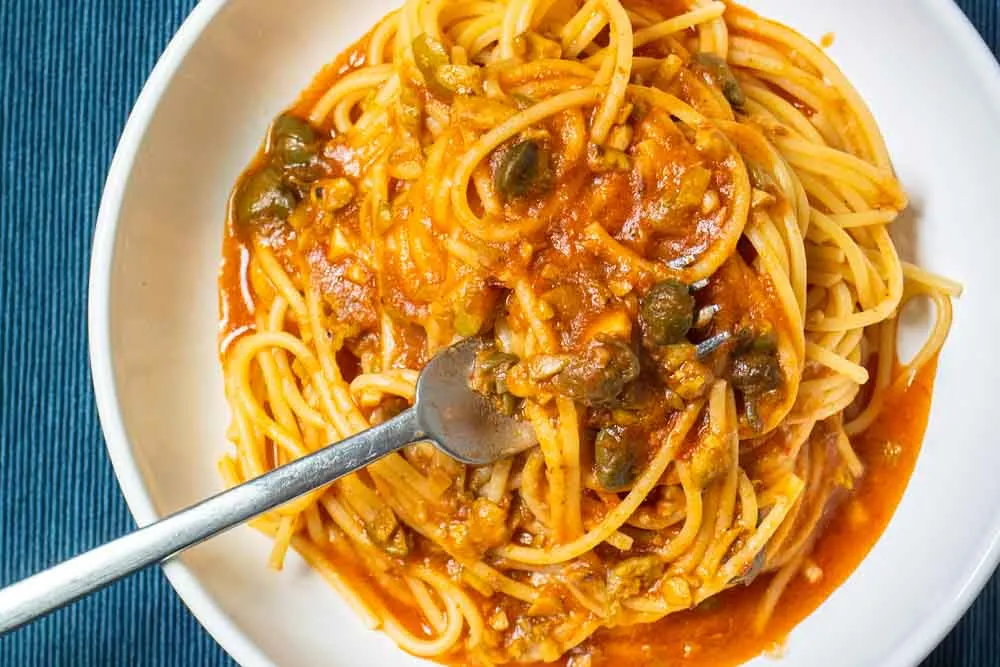
We love Spaghetti alla Puttanesca in all it’s salty, saucy, briny, umami-rich glory. Mindi especially loves the dish and would be happy to eat it every day of the week whether we’re eating in Italy or at home in Lisbon. Okay, maybe not every day, but you get the picture.
While we can cook the classic Mediterranean pasta almost anywhere in the world, it’s especially easy in our Portuguese home. When we open our pantry, Puttanesca sauce is just a ‘chop’, skip and a jump away from the stove.
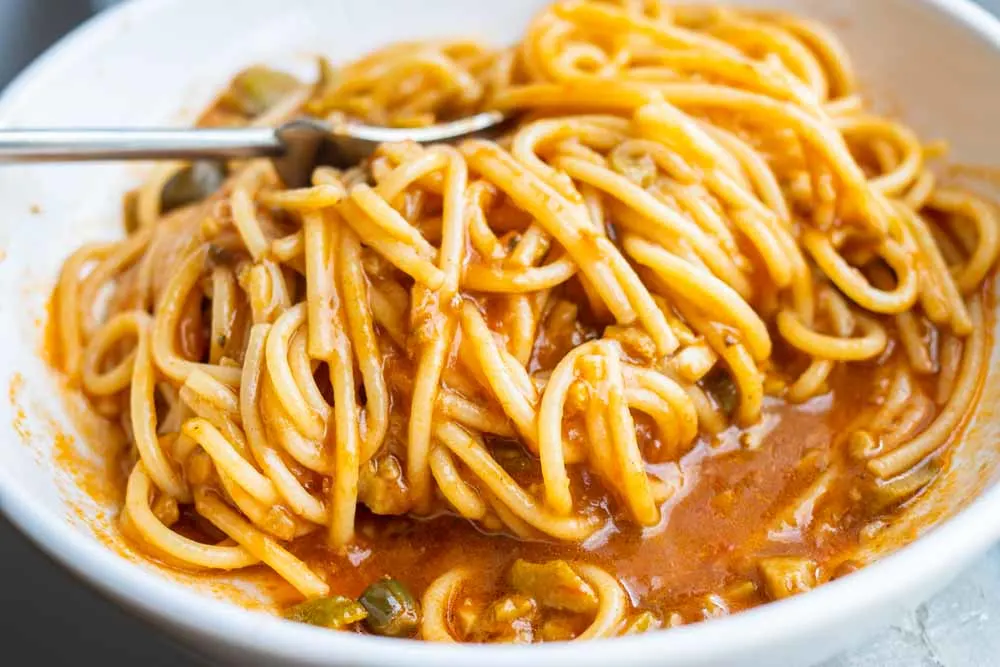
In Lisbon, great anchovies and salted capers are available at El Corte Inglés, a local Spanish supermarket. Olives are plentiful at neighborhood markets and our proximity to Italy makes Italian tomato products like passata cheap and convenient to use.
Pro Tip
Don’t despair if you don’t live in Europe and want to make Pasta Puttanesca. All of the necessary ingredients are available and abundant around the world.
In its essence, Pasta Puttanesca is great because of its timeless pairing of sweet, acidic tomatoes with salty capers and anchovies. These umami-rich elements combine to create a grand Italian chorus of flavor.
Born In Naples With Anchovy As The Star Of The Show
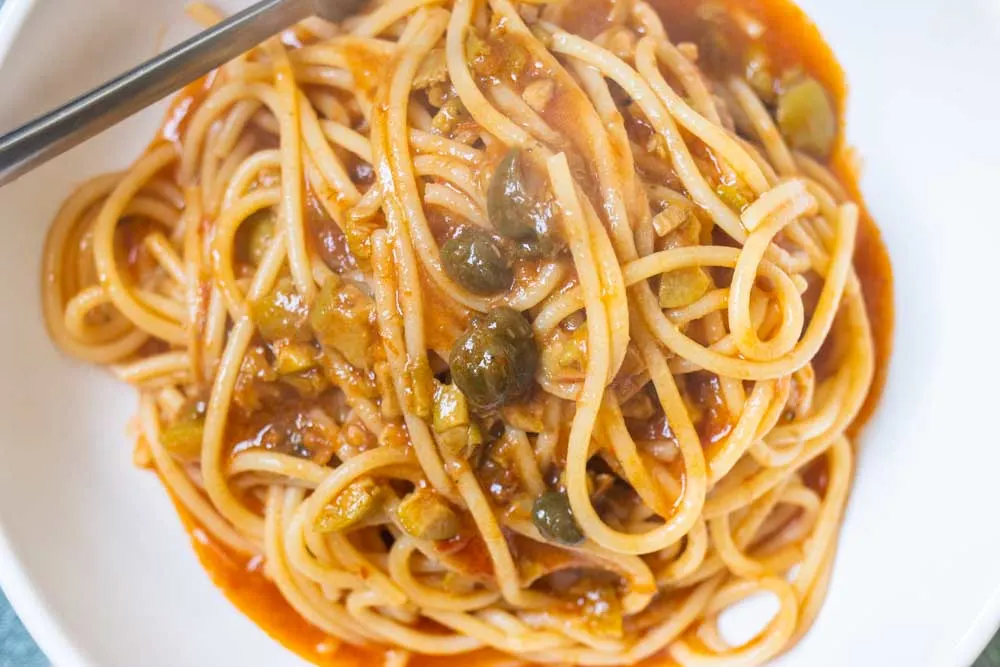
The best Italian pasta dishes don’t have clear origin stories. This is the case with the four great pastas in Rome and it’s also the case with Puttanesca. Sure, there are some legends about Naples, prostitutes and a restaurant owner who was desperate to feed a few people with ingredients he had on hand, but nobody knows for sure.
The elements of the story from Naples ring true with us. We love the rough and ready Italian food city and consider Neapolitan food to be some of the best in Italy. After visiting the seaside city a number of times, we understand the importance of the mighty yet tiny anchovy in Neapolitan cuisine.
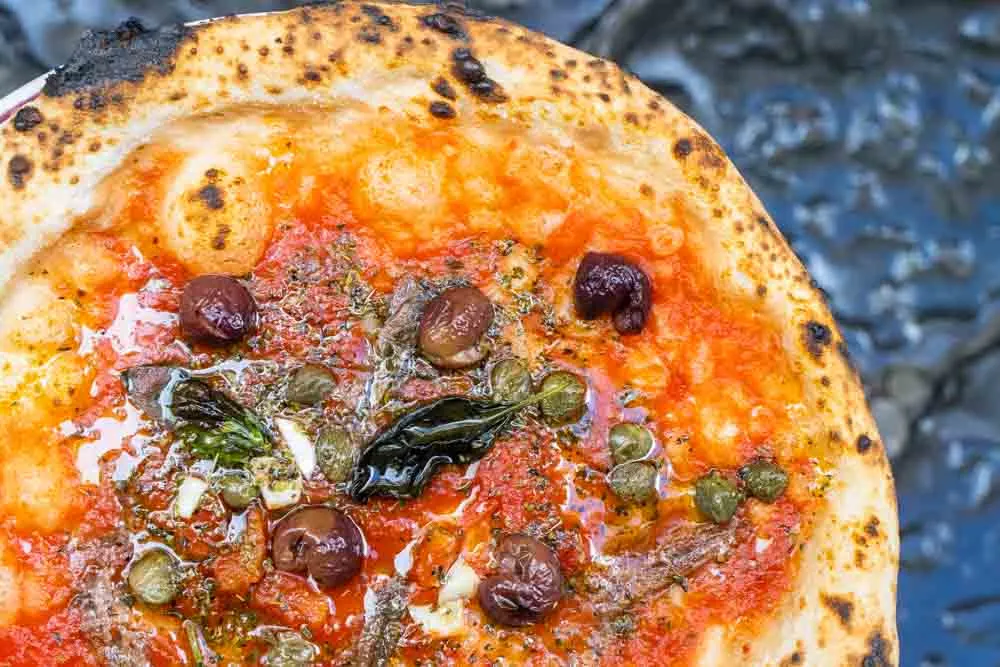
To be honest, the best anchovies found in Naples are unique to the region and are (most likely) impossible to find anywhere outside the boot. We haven’t found plump, funky, salted beauties called “acciughe” in our Lisbon headquarters. But that’s okay.
Standard oil-packed anchovy filets provide more than enough deep, fishy flavor for this dish to work. When combined with sweet acidic tomatoes, their flavors are pure magic both on pizza and in Puttanesca pasta sauce.
Ingredients
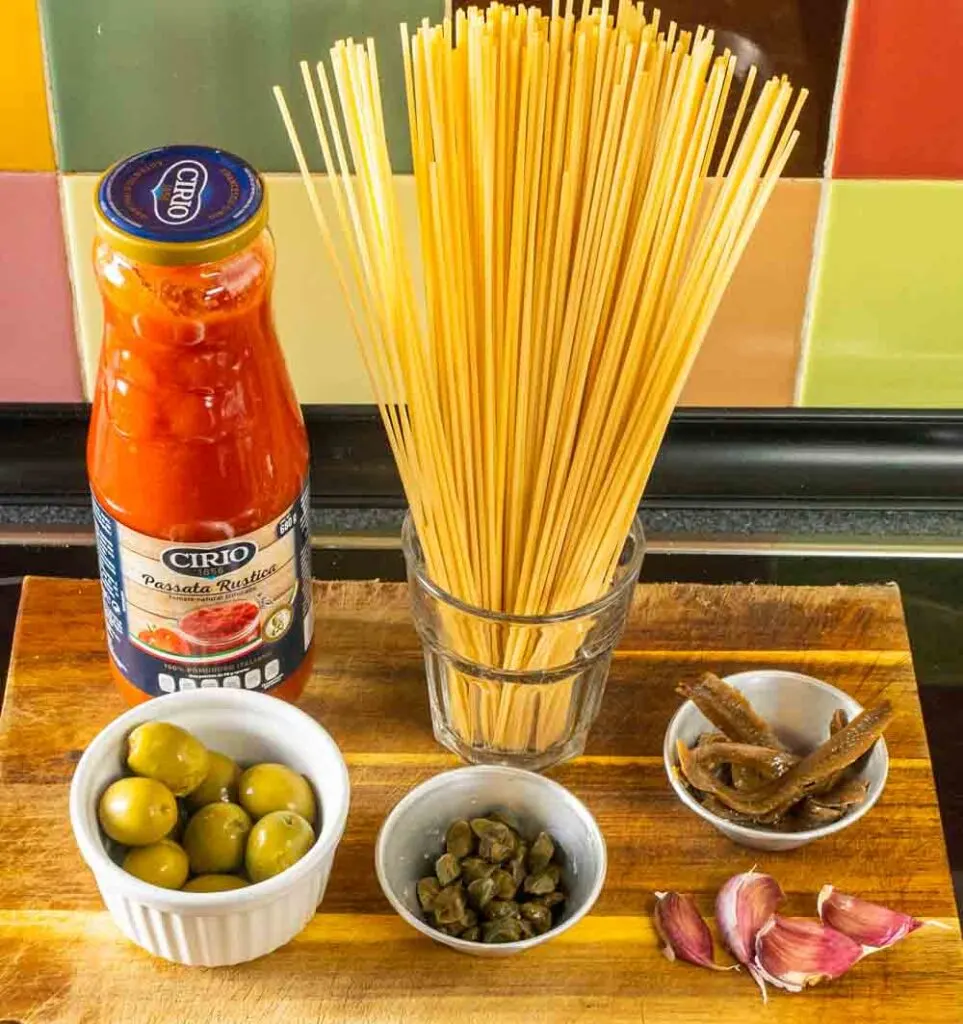
The beauty of Pasta Puttanesca is that you don’t need any fresh ingredients besides garlic. These are the recipe’s only required ingredients:
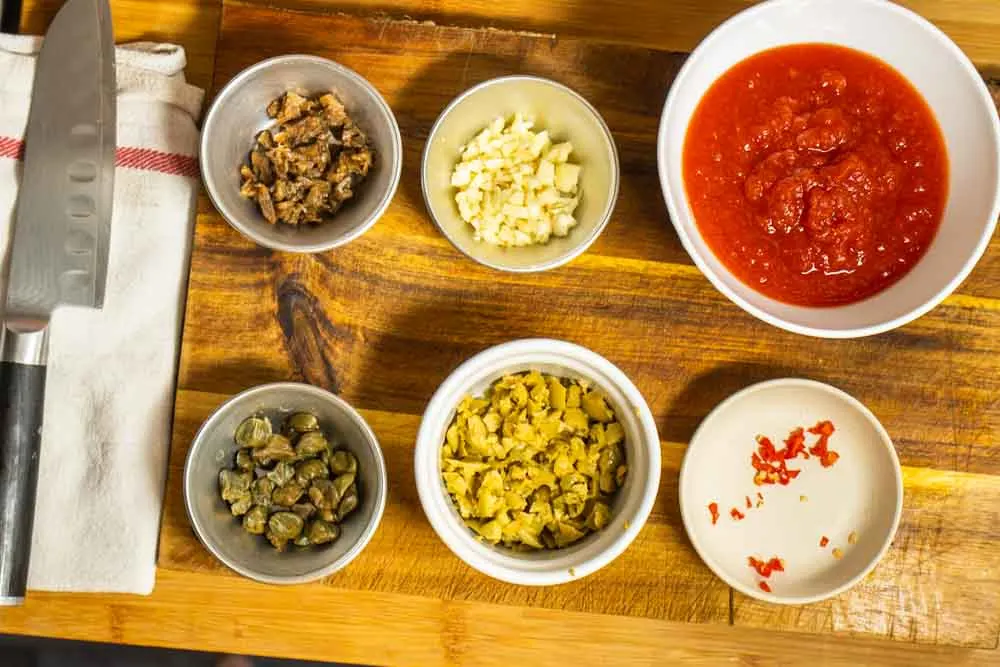
You most likely have everything in your pantry. Otherwise, you can buy any missing ingredients at your local market.
Capers
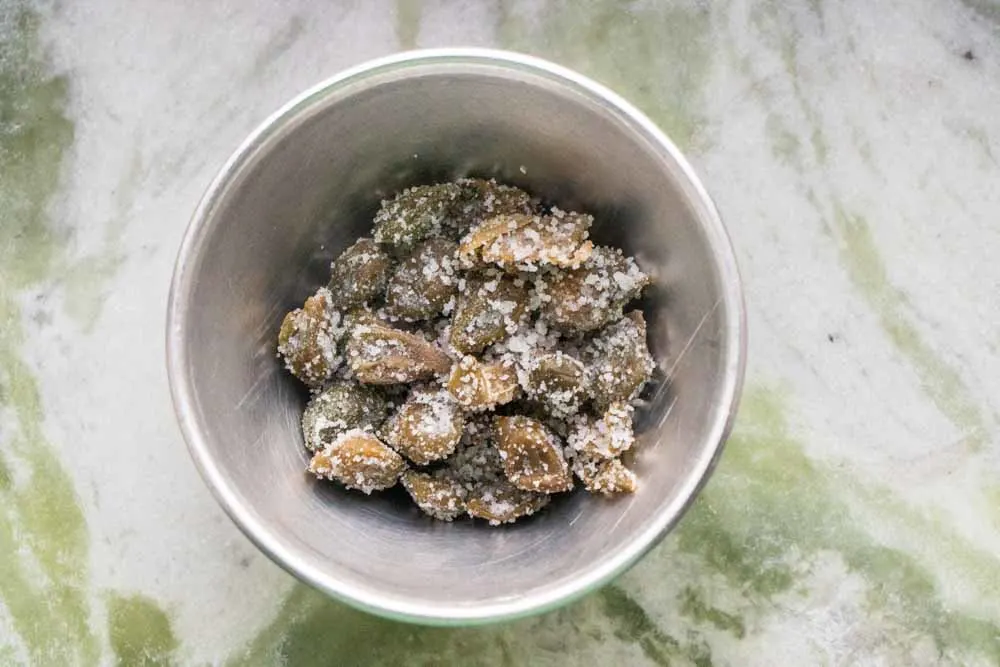
Like most things in the kitchen, what you put into Puttanesca directly impacts what you’ll get out. For this recipe, we use capers packed in salt instead of brine. They’re bigger and impart a more verdant, vegetal flavor.
You’ll want to rinse the capers thoroughly to remove excess salt. This applies whether you used brined or salt-packed capers.
Buy salt-packed capers from Amazon if you can’t find them where you live.
Anchovies
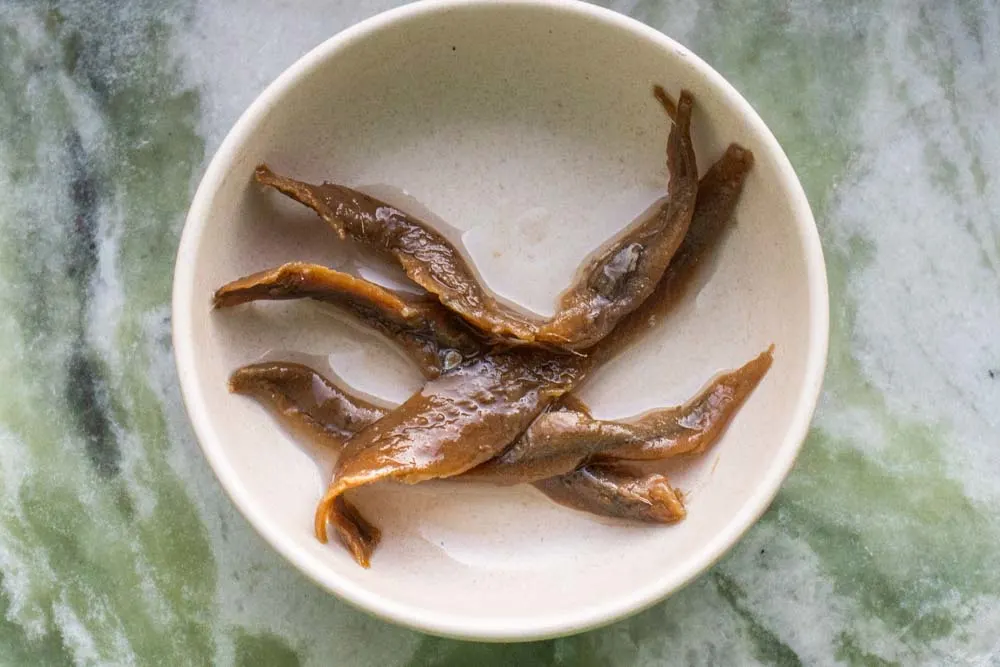
We’re lucky to have access to high-quality anchovies where we live. Regardless of where you live, we suggest that you source imported Spanish or Italian anchovy filets if you can find them.
In most cases, you should be able to find good, umami rich anchovies at specialty shops. If not, you can order them online.
Buy Spanish anchovy fillets from Amazon if you can’t find them at a local specialty shop.
Olives
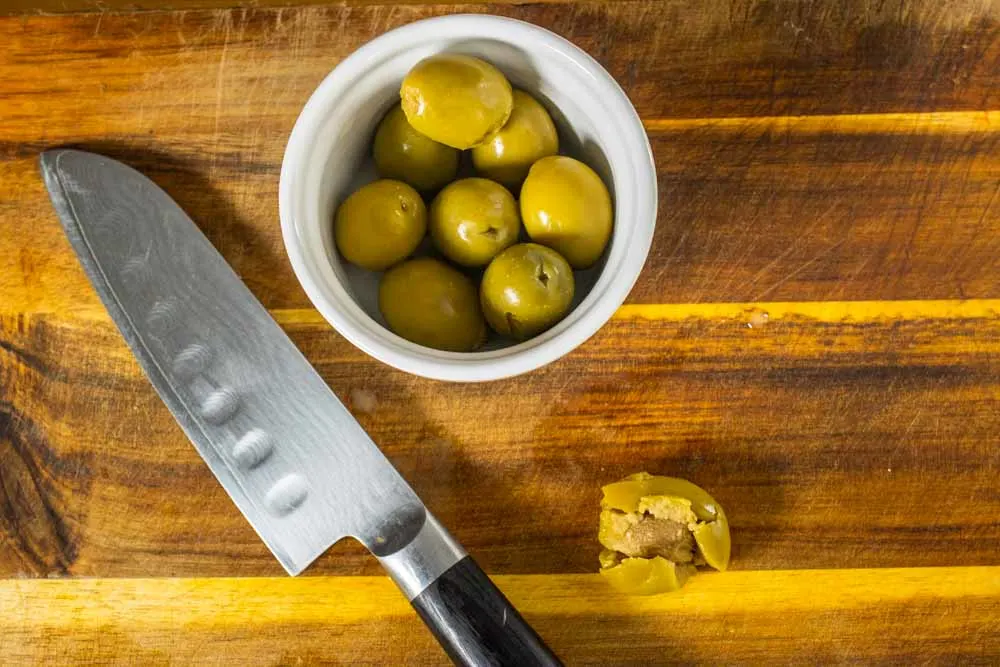
While some Pasta Puttanesca recipes specifically call for black, oil-cured olives, we say use what you have and what you like. We recently used large green Portuguese olives that we had originally bought for crafting dirty martinis. We smashed them to remove the pits and the result was great.
Pro Tip
We recommend using olives with a firm flesh and briny, not winey, flavor if you choose not to use oil-cured olives.
Tomato Passata
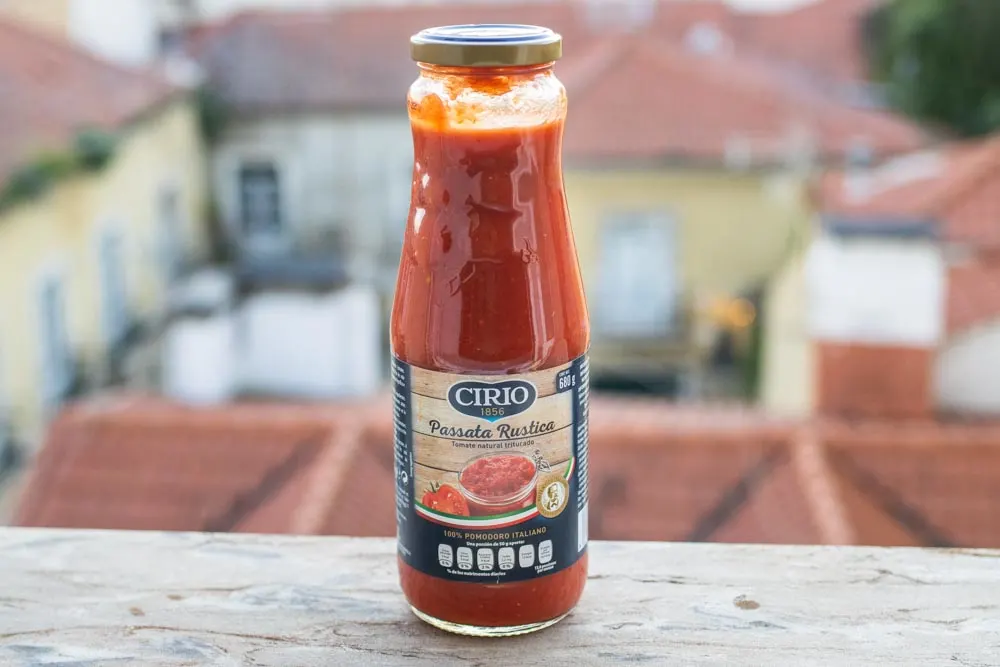
We first discovered the versatily of Ciro Passata Rustica when we lived in Naples for a month. Passata literally flew off off the shelves with Nonnas elbowing each other for bottles, often buying two or three at a time.
For the unfamiliar, passata is essentially unseasoned tomato purée that’s strained of seeds. Some passatas are smooth while others like Ciro Passata Rustica are chunky and ‘rustic’. You’ll typically find passata in glass bottles and lined paper cartons.
Pro Tip
Passata’s packaging doesn’t impart any metallic flavors that you may find in canned tomatoes. Tests have shown otherwise but we still prefer glass jars over metal cans.
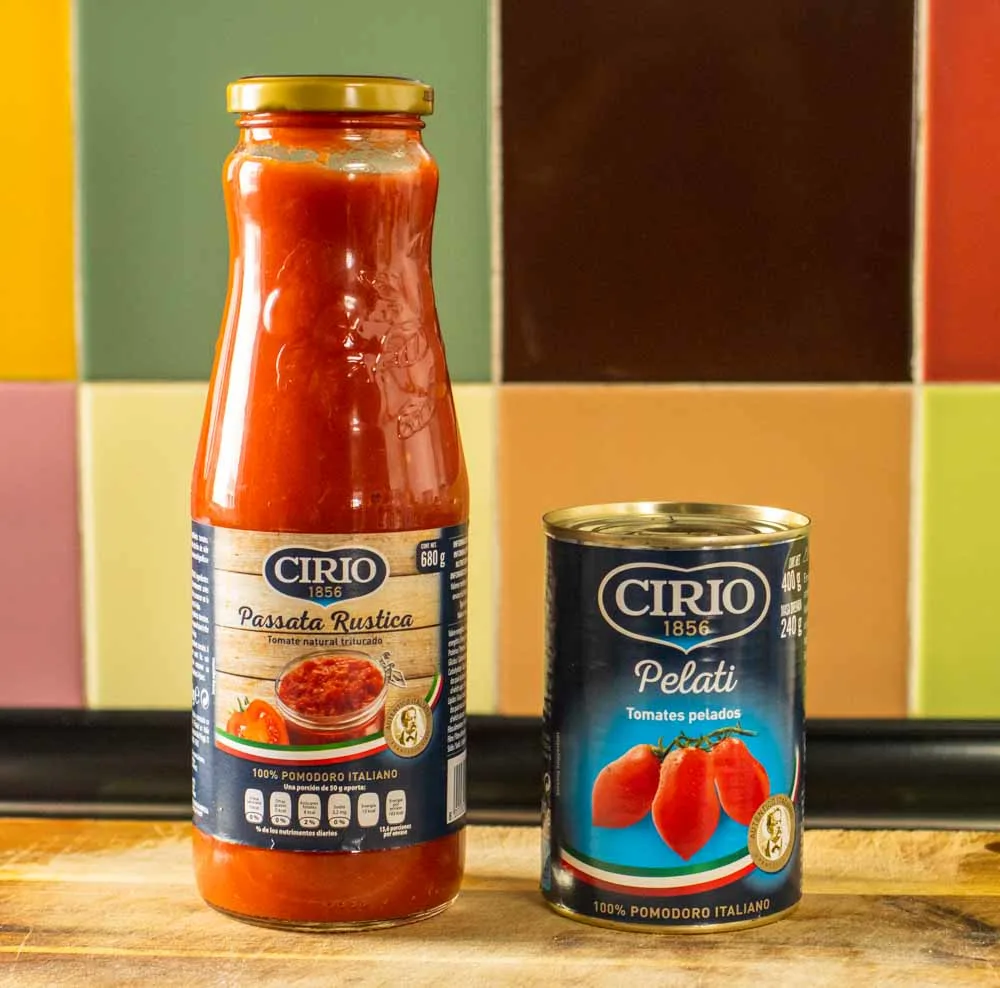
So why do we like passata so much? First of all, it’s easy to use. We can pour a third of a bottle of passata over sautéed onions and garlic to create an instant sauce.
Since we live in Europe, we can buy Ciro Passata Rustica for excellent prices, often for under the equivalent of $2 a bottle or less. Also, glass resealable containers make passata easy to store and use.
Don’t give up if you don’t have easy access to passata. As an alternative, you can use whole canned tomatoes and mash them with your hands or a potato masher. But, with passata becoming more widely available, we highly recommend passata if you can find it and it’s affordable.
Buy a jar of Passata from Amazon if you can’t find it locally.
Pasta
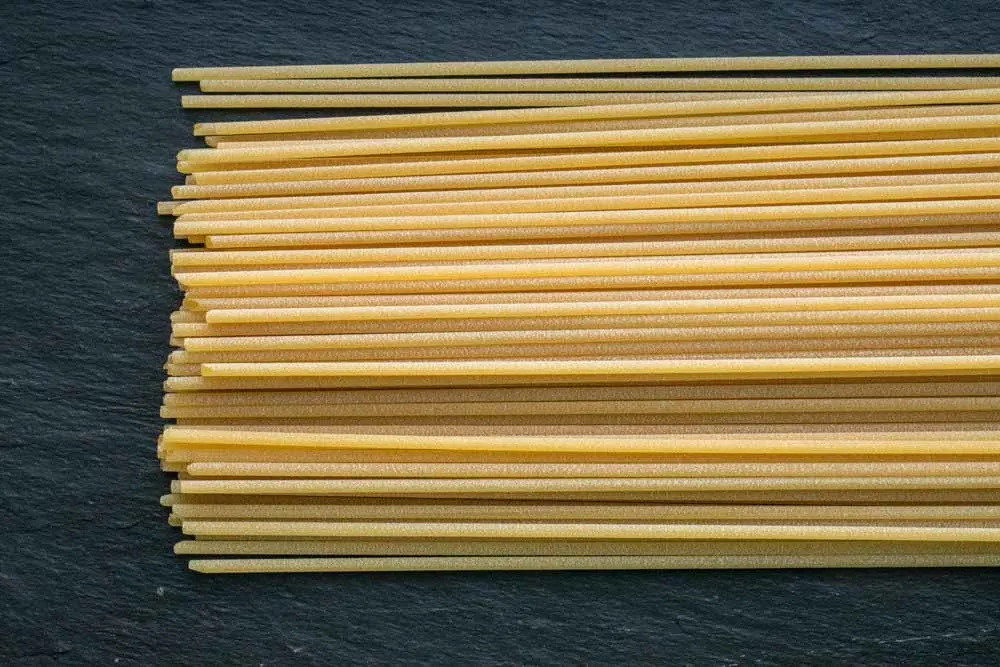
We like to splurge on our pasta and we suggest you do the same. Better pastas are produced using bronze dyes which leave a rougher surface on the product. The benefits are twofold:
- This type of pasta imparts more starch into the pasta water which creates pasta sauce that’s richer and more viscous.
- Sauce clings better to the rougher surface.
Buy Italian spaghetti made with bronze dyes from Amazon if you want to splurge too.
How To Make Spaghetti Alla Puttanesca
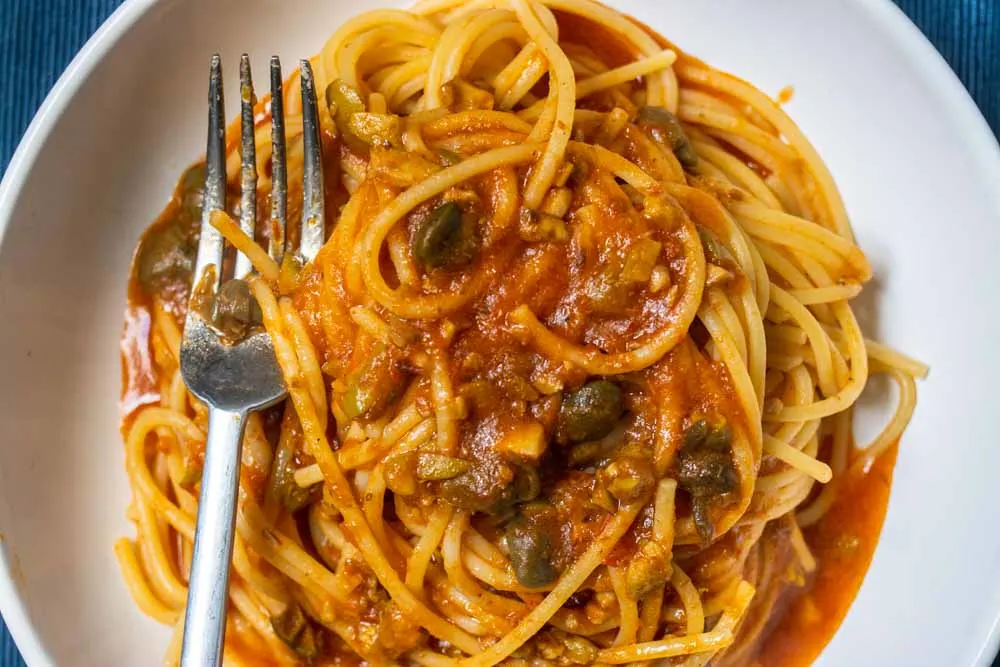
Executing this dish is simple.
While we wouldn’t call our Spaghetti Passata recipe a quick cook, it’s as easy as chopping ingredients, doing a quick sauté and letting the dish cook for 45 minutes to an hour.
True Story
We were once caught up in a conversation with friends while our Puttanesca sauce was on the stove. The extra simmering time let the intense flavors meld and mellow beautifully.
The preparation for our Spaghetti alla Puttanesca recipe is easy to accomplish with a cutting board and chef’s knife.
The first step is to remove olive pits and smash the olives. You can use the side of your knife as a smashing tool.
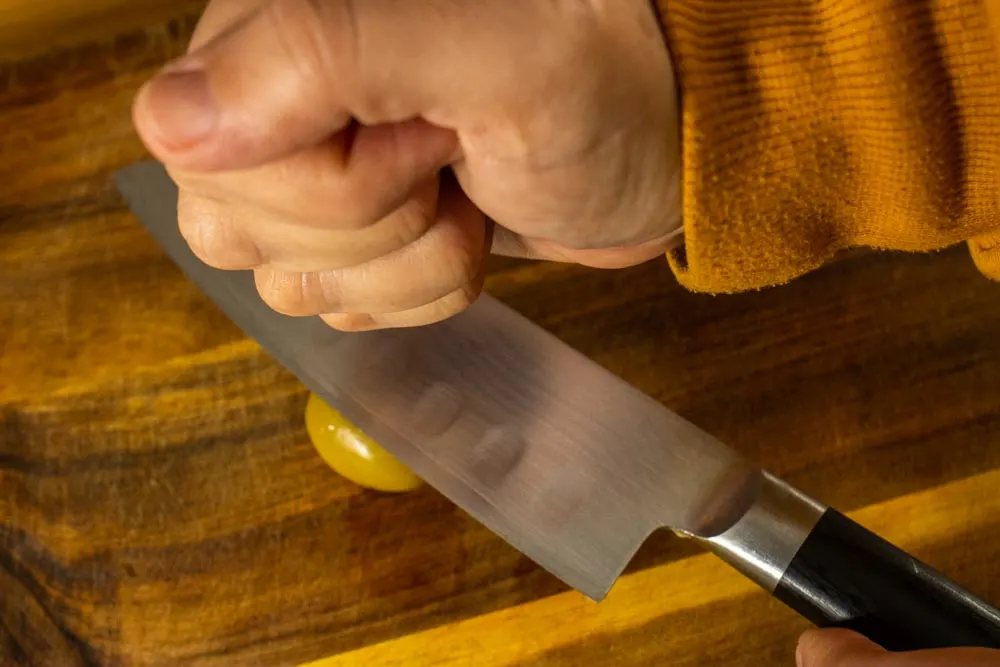
You’ll next use the knife to chop the anchovies, garlic and olives. You should chop the anchovies medium coarse.
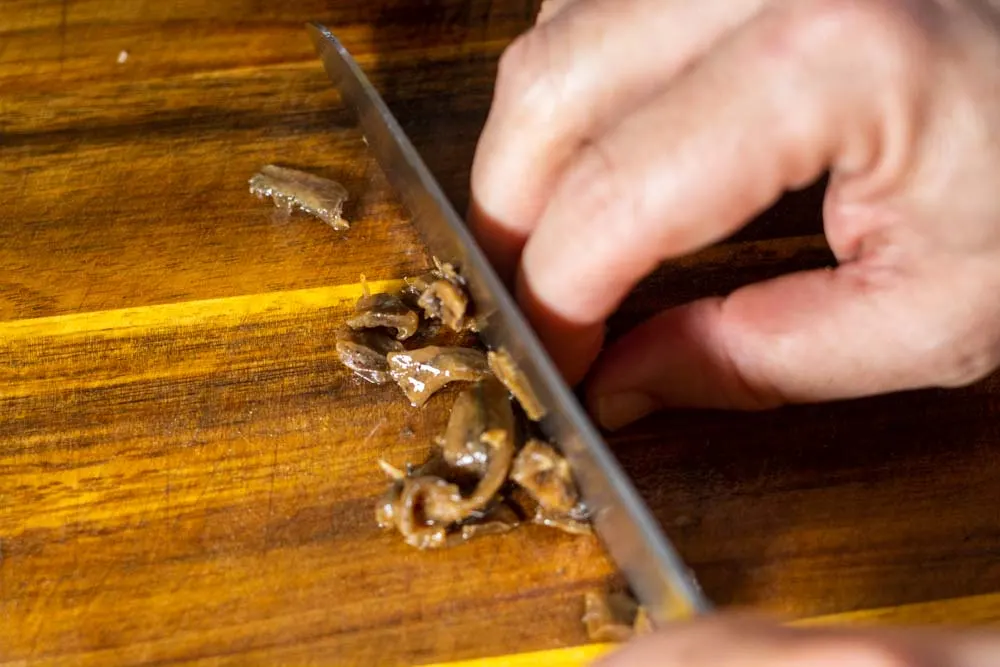
You’ll also want to chop the olives medium coarse. The goal is to achieve evidence of olive in every bite of the sauce. However, you can chop finer if you prefer.
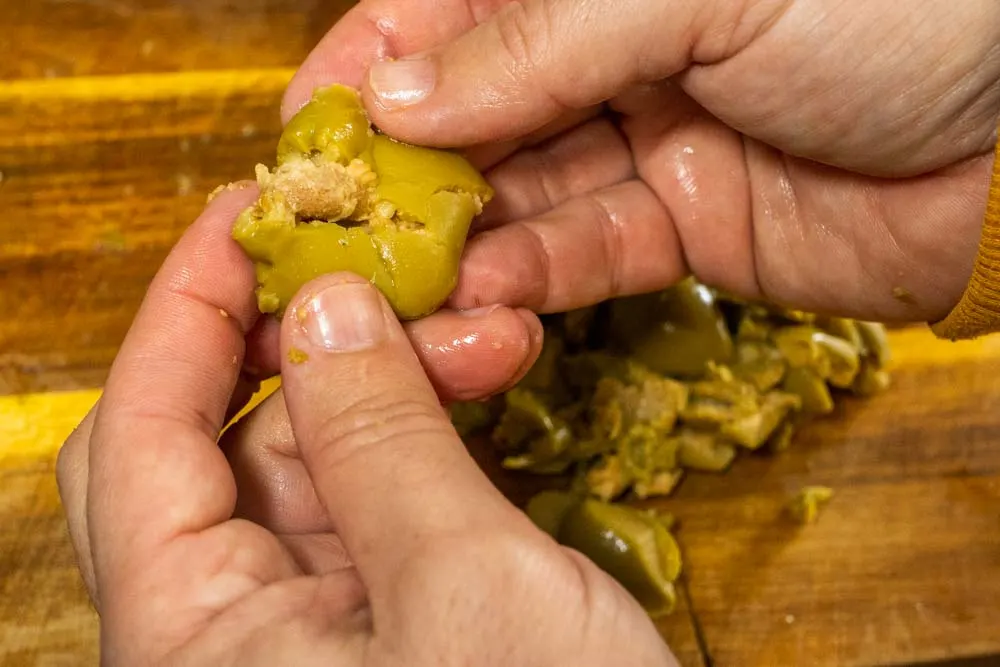
The garlic is a different story. We typically chop our garlic fine instead of medium coarse. However, you may prefer a slightly rustic texture with the garlic.
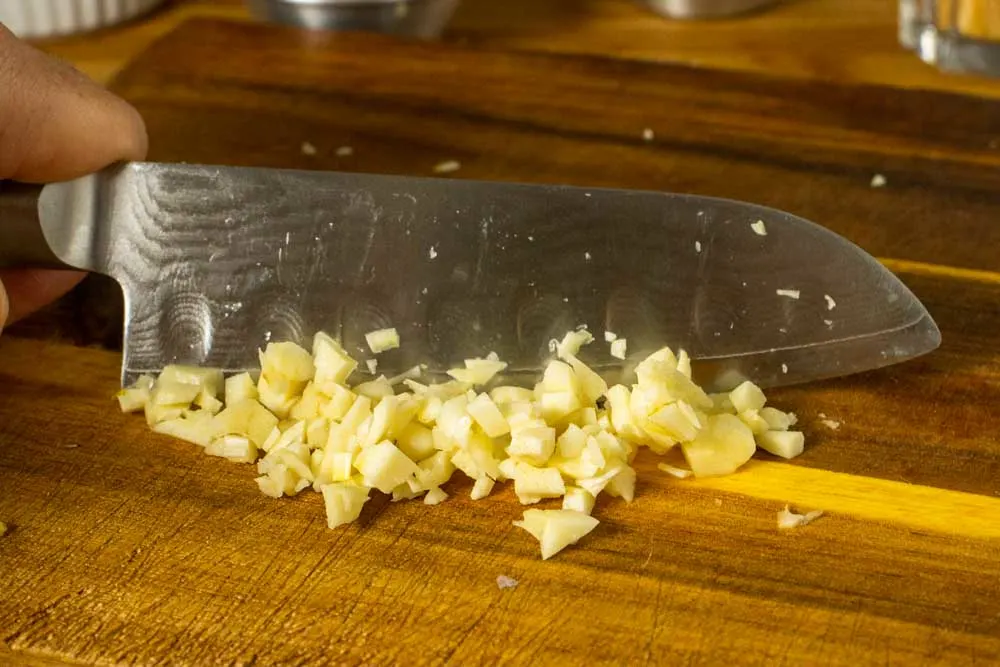
We quickly chopped the garlic. Do you notice a trend here?
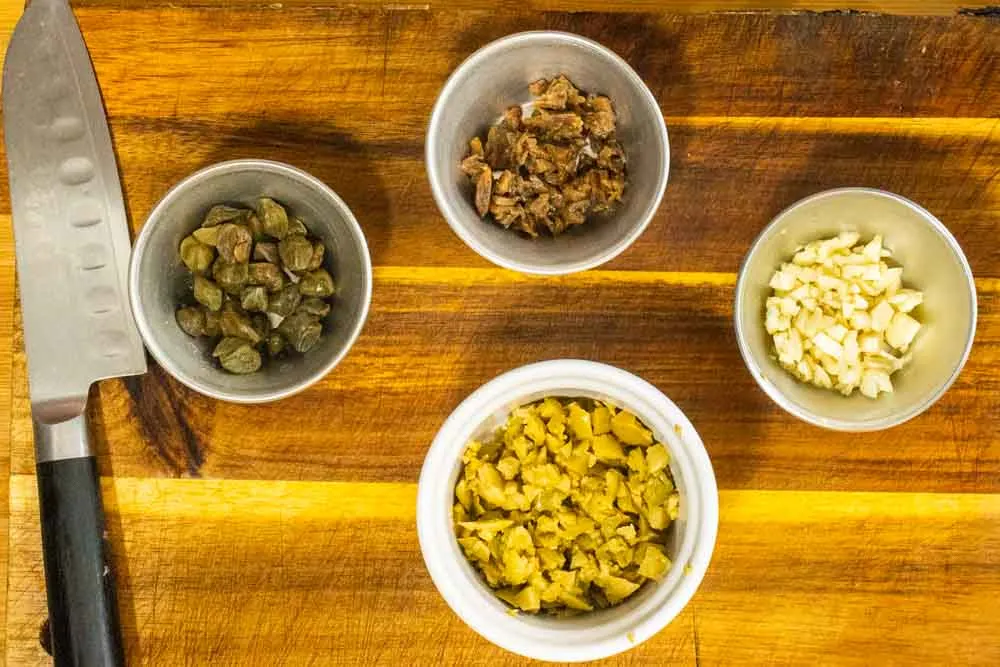
Place a 12″ frying pan over a medium fire. Add a quarter cup of olive oil to the pan when it becomes hot.
Once the oil is heated (approximately 20 seconds), add the garlic and cook until it browns slightly.
Pro Tip
While you don’t want to burn the garlic, you can let it get a little darker than normal since the slightly bitter, caramelized flavor of the garlic will mellow as the sauce cooks.
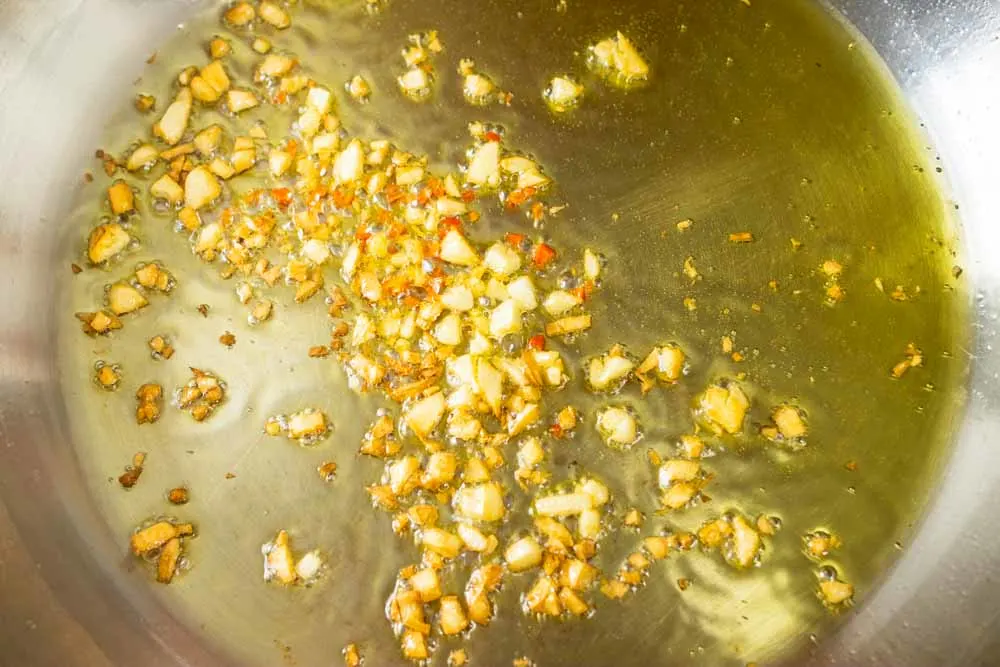
Add the anchovies, chili pepper, olives and capers which, along with the garlic, will infuse their flavors into the olive oil.
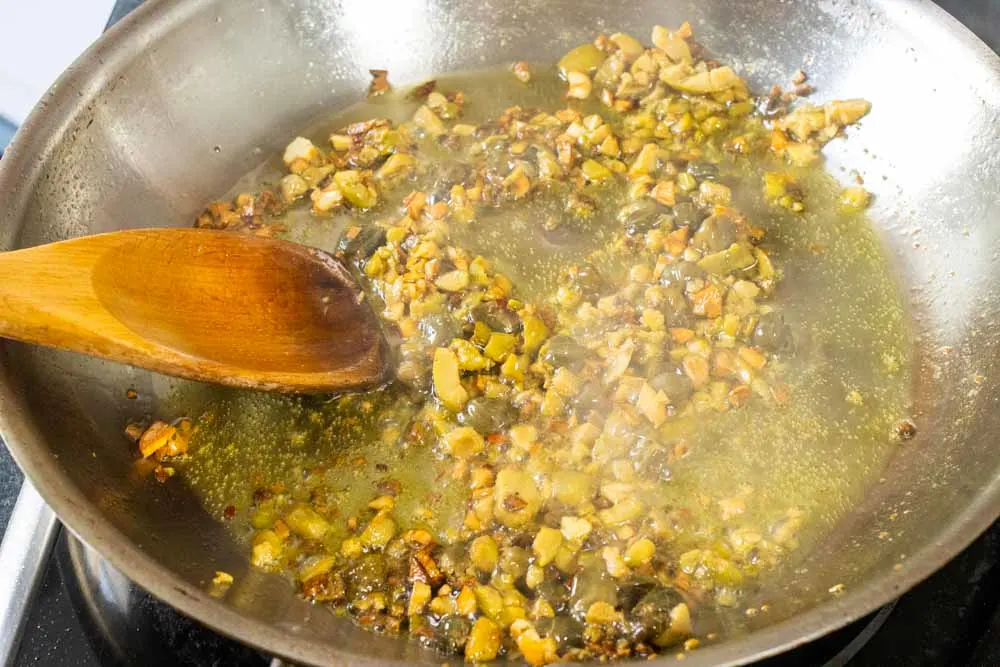
After about three minutes, pour in the passata.
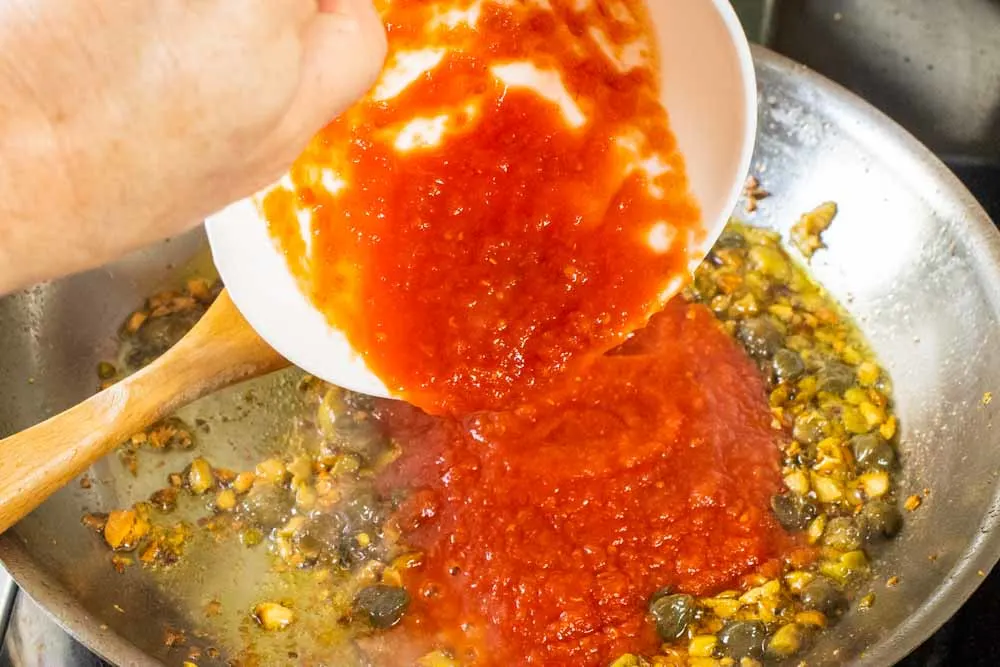
Wash out any tomato residue from the bowl with about a 1 cup of water.
Buy the same All Clad pan that we use in our recipe. We swear by this pan.
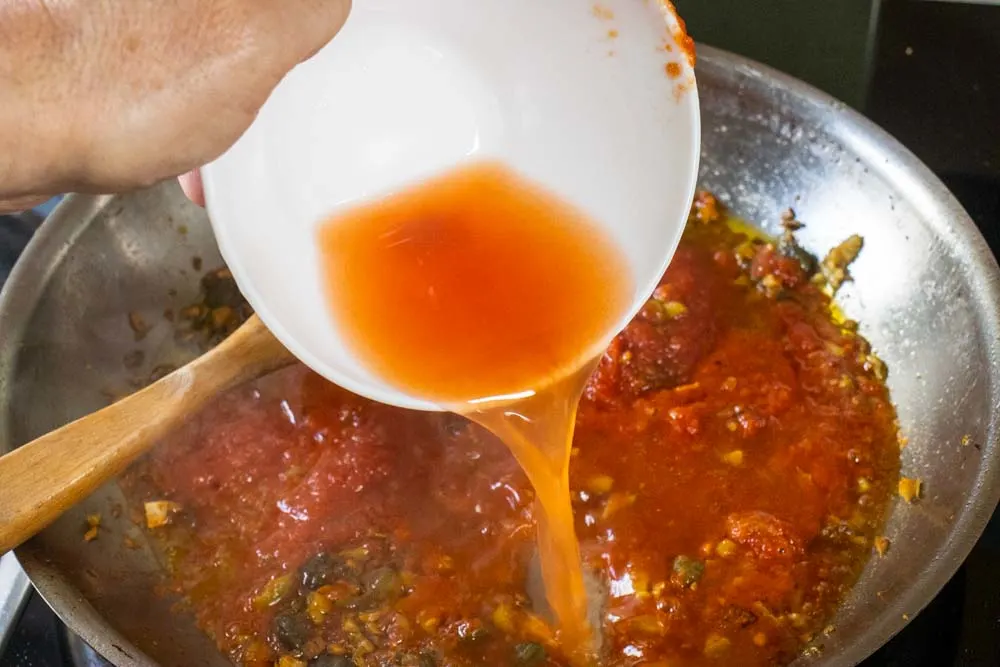
Once you’ve stirred in the tomatoes you can turn the fire on low. You can let the sauce cook at a steady simmer for 45 minutes to an hour. Be sure to add water if the sauce gets too thick to prevent burning.
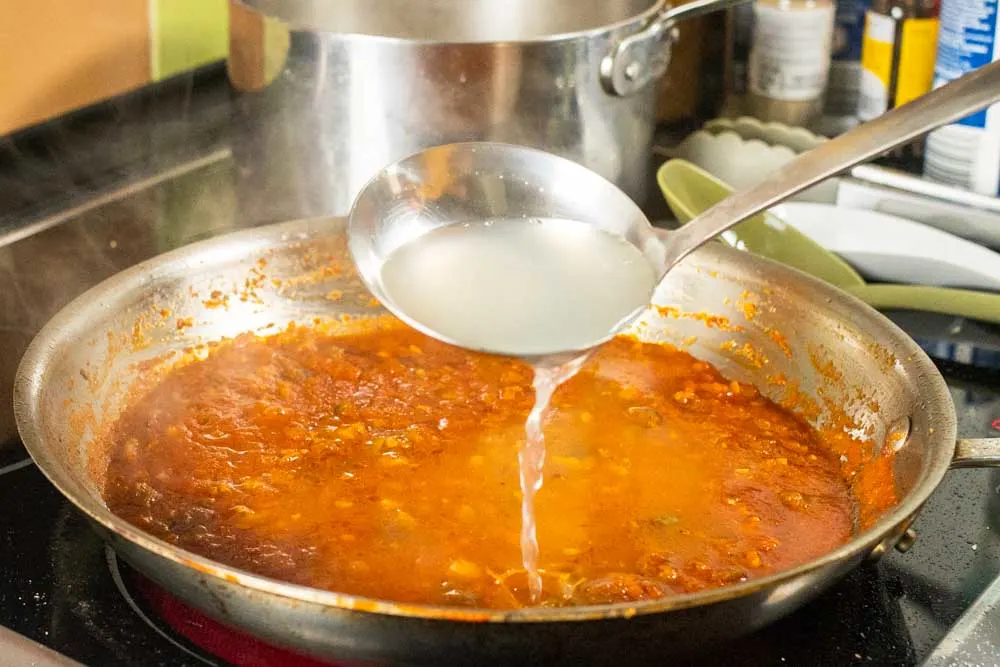
When you feel the sauce is done, boil 4 to 5 quarts of water in a saucepan or sauté pan large enough fit the spaghetti. Drop the pasta in the pan.
Pro Tip
If you’re using a narrower saucepan, you may need to bend the spaghetti into the pan in order to submerge it all in the boiling water.
About 3 minutes before the pasta is ready, turn the fire under the sauce to medium high. One minute before the pasta is done, spoon about 2 ladlefuls of the pasta water into the sauce. Then, using tongs, move the finished pasta to the sauce pot.
The pasta and sauce will be ready once you can see the bottom of the pot when you drag a wooden spoon. All that’s left to do is serve the pasta in bowls and enjoy.
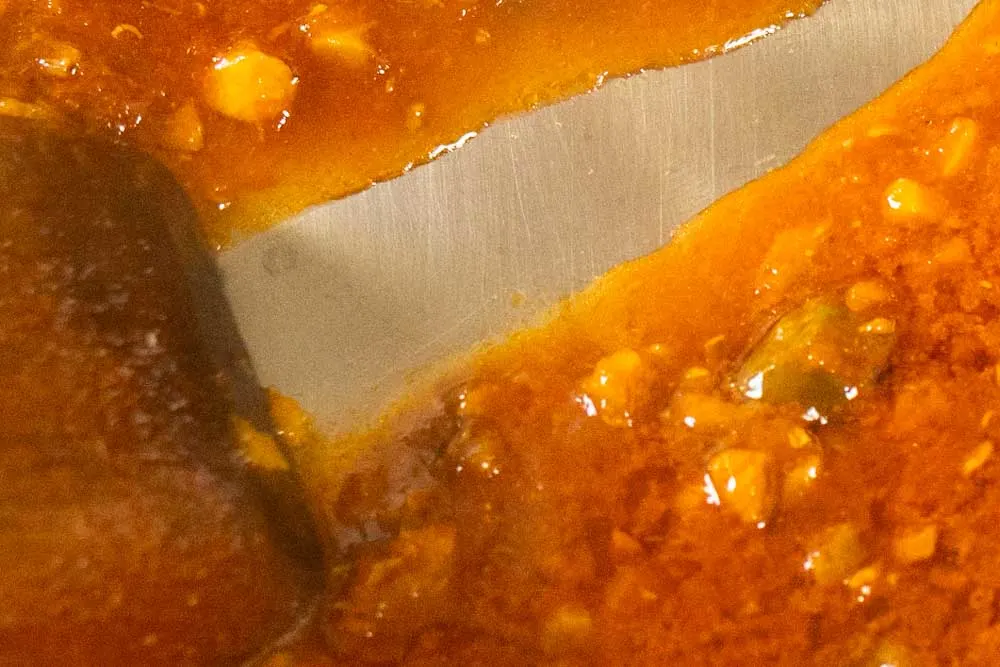
You don’t even need to add salt or grated cheese. However, we won’t blame you if you pour yourself a glass of wine. In fact, we encourage it.

Did you make this pasta dish? If so, please rate the recipe below.
Spaghetti alla Puttanesca Recipe
Ingredients
- 7 ½ ounces passata OR 1/2 of a 15-ounce can of whole peeled tomatoes (mash if using whole tomatoes)
- ¼ cup capers (rinsed to remove excess salt)
- ½ cup whole olives OR 1/4 cup pitted olives (coarsely chopped)
- 5 anchovy fillets (chopped medium fine)
- 4 garlic cloves (chopped medium fine)
- 1 small red chili pepper OR 1/8 t Italian pepper flake
- ¼ cup olive oil
- ½ pound spaghetti
- black pepper (to taste)
Equipment
Instructions
- Heat a 12" saute or fry pan to medium high and add olive oil.
- Once the olive oil is heated (It should shimmer a little.) add the garlic and chili pepper. Cook until the garlic just starts to brown.
- Add the anchovies, capers and olives to the pan and sauté them for about 5 minutes.
- Add the tomato passata along with about a cup of water. If you’ve poured the passata into a bowl, you can use the water to wash any tomato residue from the bowl.
- Bring the mixture to a steady simmer. Turn the heat to low.
- Simmer the sauce for 45 minutes to an hour. Add more water if the sauce becomes too thick or it will begin to burn. Make sure the sauce is thick when you’re ready to finish the dish.
- Boil 4 to 5 cups of water in a saucepan or 12" skillet.
- Cook the spaghetti according to the instructions on the box.
- One minute before the spaghetti is done, add one to two ladlefuls of water from the pasta pot to the sauce.
- Using tongs, move the pasta from the pasta pot to the frying pan.
- Cook pasta and sauce until thick. You should see bottom of the frying pan when you run a wooden spoon across it.
- Serve in medium bowls. Enjoy!!
Pro Tips
- If you serve this recipe as a starter, it should serve 4 people.
- You can double this recipe to serve 4 main dishes.
Estimated Nutrition

About the Authors
Daryl and Mindi Hirsch
Saveur Magazine’s BEST TRAVEL BLOG award winners Daryl and Mindi Hirsch share their culinary travel experiences and recipes on the 2foodtrippers website. Since launching the site in 2012, they’ve traveled to over 40 countries in their quest to bring readers a unique taste of the world.
Original Publication Date: March 9, 2021
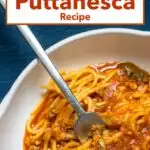
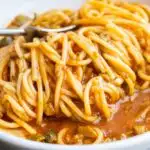
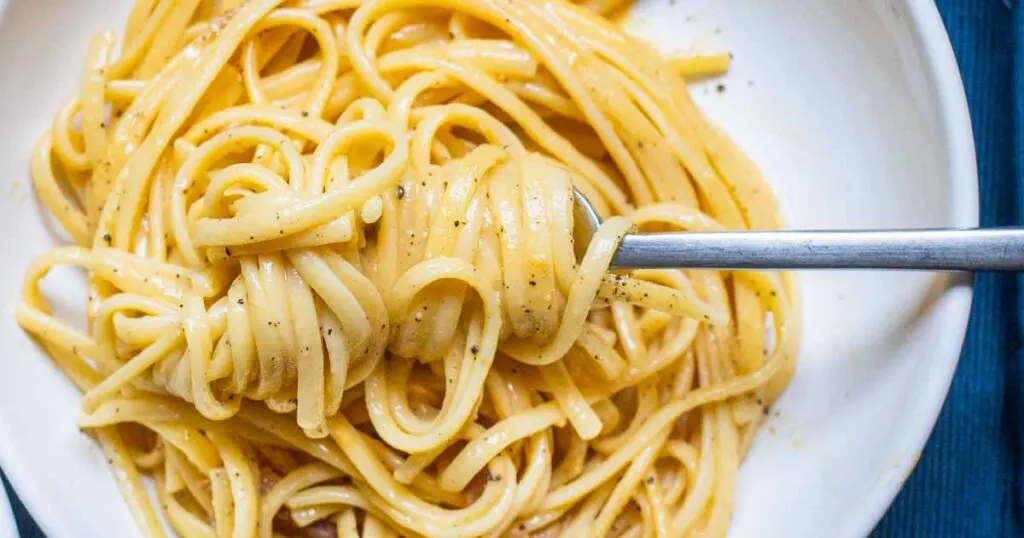
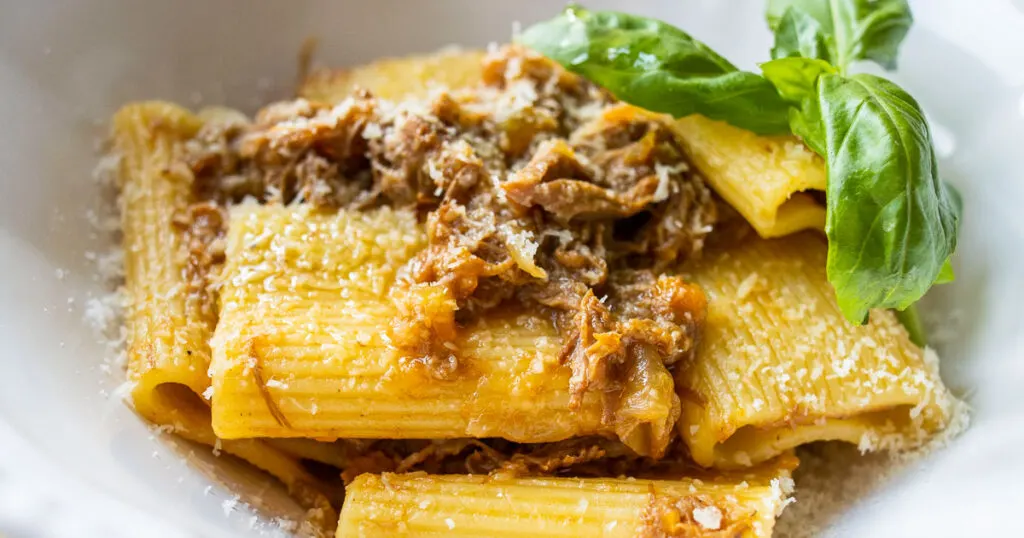
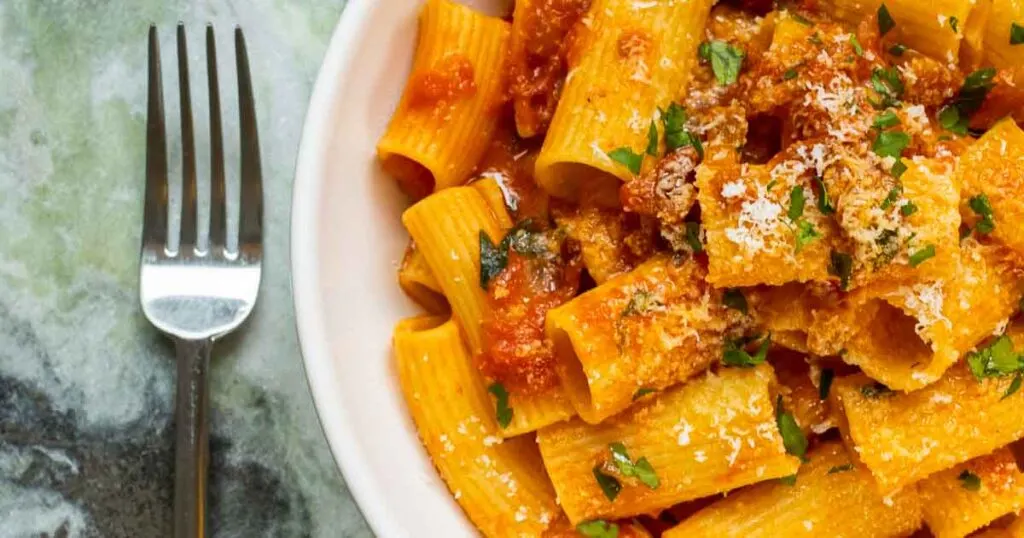
Richard
Sunday 29th of January 2023
I will be sure to take your recommendations to heart in preparing pasta Puttanesca in the future. My sine qua non for Puttanesca is Kalamata olives. They're so tasty you can snack on them right out of the bottle.
Daryl and Mindi Hirsch
Monday 30th of January 2023
True Richard. It's your kitchen and, in the bounds of the recipe, you can use whatever olives please you best. (Just remember to taste for salt, unless bracing saltiness is your thing.)
Chris
Thursday 5th of August 2021
Having lived in Naples for 30 years and Italy for 39 my comments are these. 1) I believe the correct pasta to be used for this recipe should be linguine and not spaghetti. 2) The addition of acciughe is a nice touch but to my knowledge not used in Naples in this dish. I also have found many pizzerias in Italy not in Naples with a pizza listed as Neapolitan that has acciughe as one of the ingredients. As far as I know the use of acciughe in many recipes is more concentrated in Calabria and Sicily and not on Neapolitan pizzas. Love reading your recipes. Keep up the good work.
Daryl and Mindi Hirsch
Sunday 8th of August 2021
Dear Chris,
We've been to Naples three times and you are incorrect. Accuighe appears on a number of pizzas. We've had it at Pizzeria D'Attilo and Gino Sorbillo just to name a couple places. As far as whether it appears in Puttanesca, anchovies do appear and the rules are free and easy. Thanks for reading.